How to Grow Tagetes |
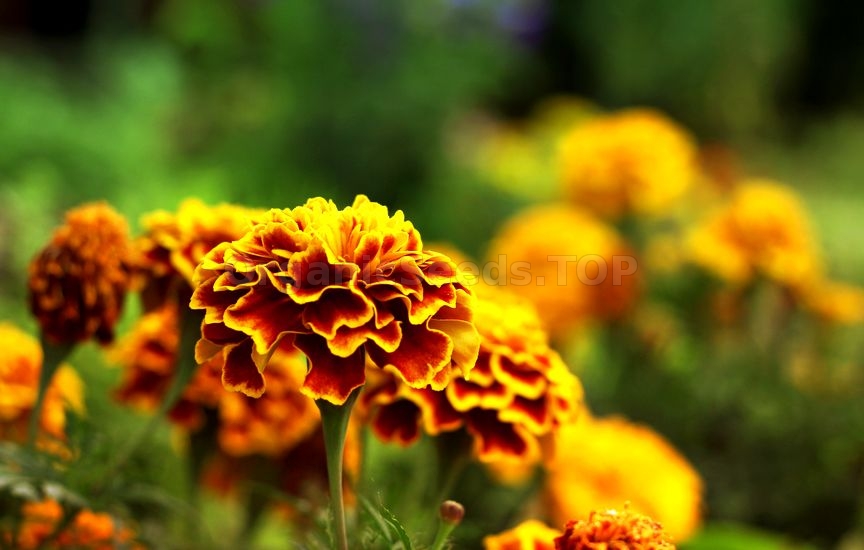 The color intensive blossoms of the Tagetes compete with the sun when it comes to shining. Starting in the 16th century, the plant came from Central America to Europe and has been a popular plant in our gardens ever since. Thanks to its low maintenance character, it does not require daily attention from the gardener. We will let you know how to do everything right with the Student’s flower in this instruction. Plant Profile
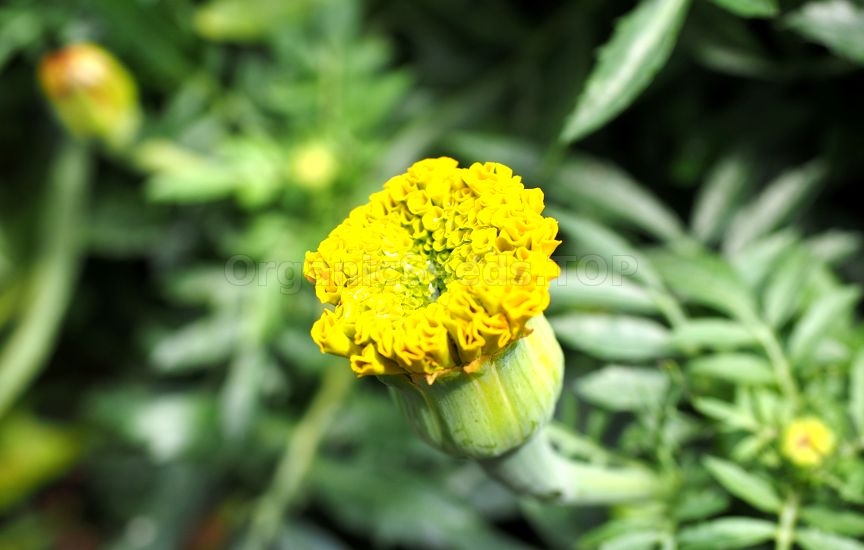 One can not think of a summer garden without the Student’s flower anymore. With its shining lime yellow to brown red inflorescence it boosts the image of not only flower beds, but also balcony buckets and graves. Many hybrids of the Tagetes have two colored flower heads. The Student’s flower was out of fashion for some time, which might have been because of its strong aromatic scent, which was perceived by many as very unpleasant. This scent has been bred out of newer versions of the plant. The new scent did have advantages though, as it warded off parasites like the white fly in a natural manner. The approximately 50 wild growing varieties of the Tagetes belong to the family of the composite. In our regions, the most widely spread are the hybrids of the Tages patula and the large flowered Tagetes erecta. In early summer, ordinary or filled blossoms in multiple hues are growing on the bushy plant. From a bright yellow to orange tones and brown red, all shades are represented, in part even multi colored ones. The older varieties spread an intensive scent via glands to the edges of leafs and roots, which is not perceived as pleasant by everyone. That is why aside from the name Student’s flower or waxflower, the rather ugly names funeral flower or student’s fart have also been established in reference to the flower. Care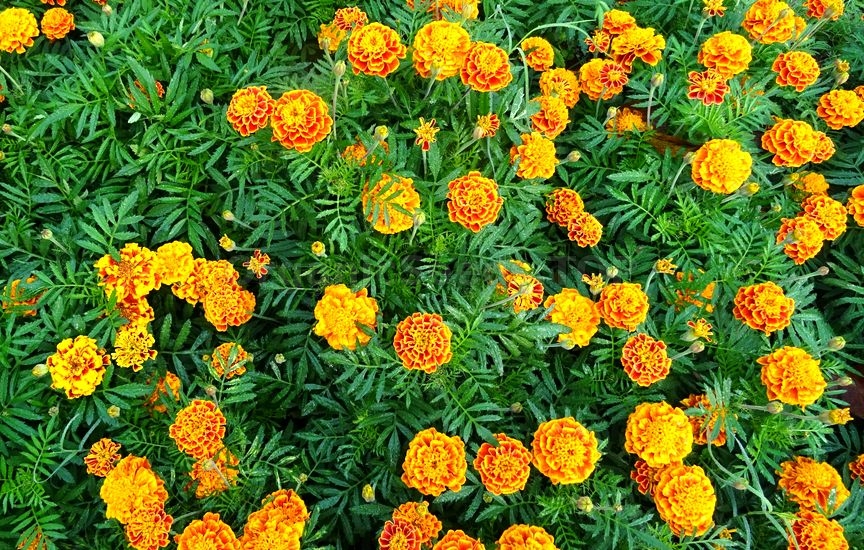 The Tagetes belong to the most popular continuous flowers in our gardens. The flower are nearly indestructible, which is why they are not only suited for beds and stone gardens, but are also perfect t be planted in graves because of their low maintenance character. The colorful continuous bloomers are however not winter hardy. That is why they have to be planted and sown anew every year.
Location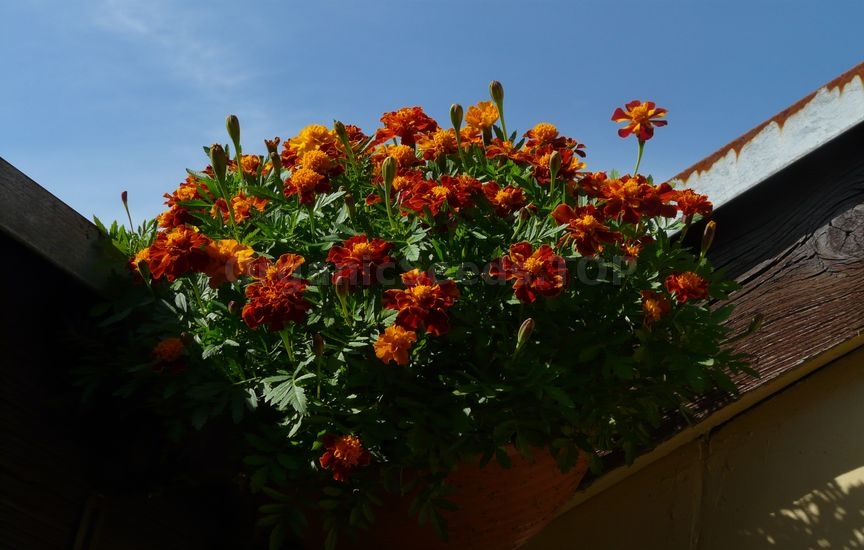 In order to fully expand their beauty, the Tagetes require a full sunny location. The low maintenance Student’s flower thrives on the southern house wall, a sunny bed or even southern balconies. It is regarded as nearly indestructible and nearly adapts to every condition there is. Only some thing that the plant does not do well with: Water logging and shadow.
The Student’s flower grows lavish blossoms up until the first frost in October if placed at a sunny and warm location. A half shady location is being tolerated is well, does lead to a less attractive visual appearance though. Great combination partners are marigolds and cornflowers even smaller varieties of the sun hat and the lobelia erinus.
Soil conditions/Substrate Regarding the soil quality, the Student’s flower is not quite picky. As long as the garden ground is not very heavy or threatened by water logging, it does well with all conditions.
Planting time In spring one can buy the most different varieties of the Tagetes in a specialist store. These plants can from the start of the Middle of May, when there are no more late frosts are to expected, be planted outside in a flower bucket.
With a proper soil preparation, one can create the best conditions for a long flowering season of the Tagete. That is why you should meticulously rake the bed and free the desired planting spot from old roots, stones and weeds. Hard grounds can be made more permeable with some sand or grit for water and air. With very sandy underlays, adding ripe compost or humus potting soil might help to provide nutrients and to better keep water in the ground.
Place the plants into the planting hole and fill the gaps with substrate. The earth should be pressed on slightly by hand be watered again subsequently. Planting in a pot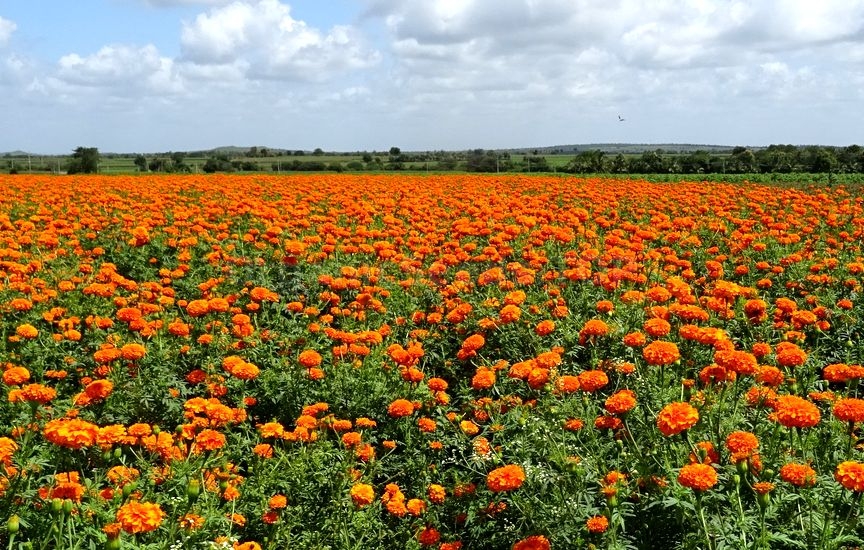 The Tagetes can also be cultivated in planting buckets or balcony baskets. Suitable are especially the varieties of small nature. Use in this case always vessels with drainage holes, as to prevent accidental soil wetness. One should will a layer of gravel or expanded concrete under the drainage holes, so that the water can flow out more easily.
Ideally add some horn shavings as a long time fertilizer to the substrate, in order to offer the best starting conditions to the Student’s flower. The Tagetes should be well watered after the planting process. Surplus water should be removed from the trivet at the most 10 minutes after planting. Watering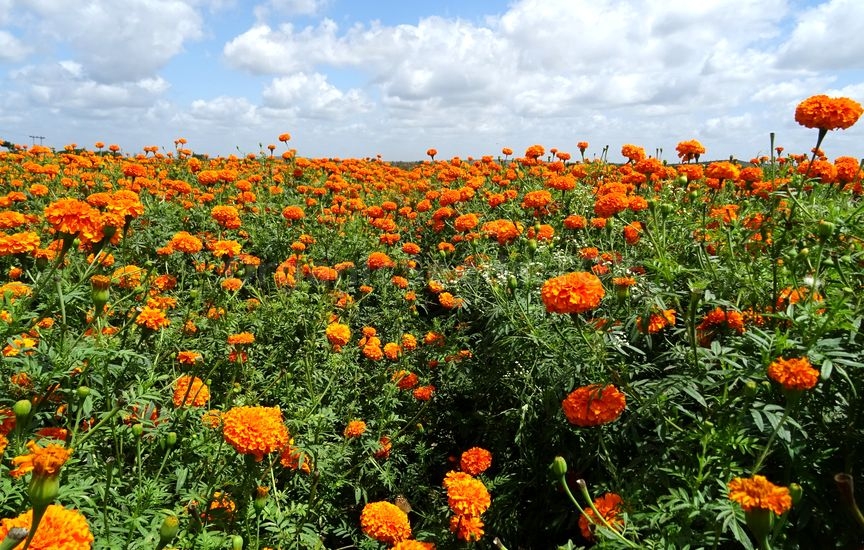 In its home, the USA to Mexico up to Argentina, the Tagetes grow on hot, dry slopes. Because of that, it thrives with some less water in our beds and flower baskets. Outside, the Student’s flower only has got to be flowered during long dry periods. If the Tagetes beautify the balcony, they mostly need some less water daily.
Cutting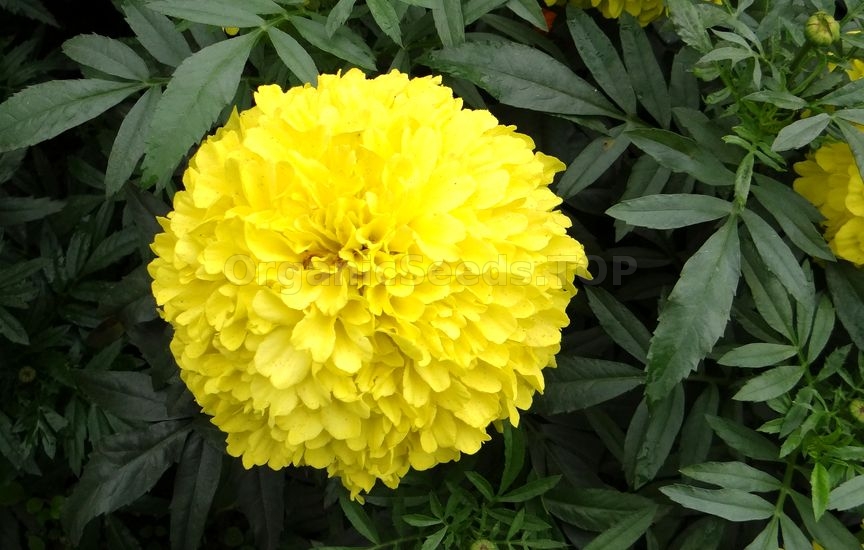 In our areas, Tagetes are being cultivated thus have not to be cut. Only withered or sick leaf should be removed in a timely manner. If withered parts are being regularly removed, the plant not only appears more beautiful, but also grows more blossoms up until autumn. Whoever intends to multiply the Student’s flower himself from seeds, should let some blossoms stands get ripe.
Hibernation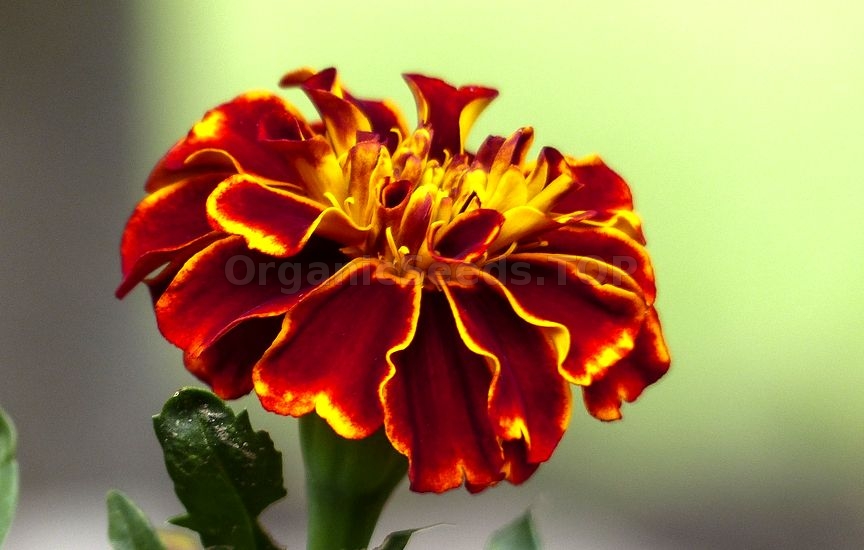 Unfortunately, none of the multiple varieties of the Tagetes is winter hardy in our latitudes. That is why the plant must be bought anew or should be cultivated by oneself from seeds. Whoever cultivates the Student’s flower in a bucket in a balcony basket and has a winter garden or a heated greenhouse, can hibernate the plant in a bright environment with 16 to 18 degrees.
Important in this regard is, to put the plant inside at the right time. The Tagetes should be sparsely watered in its winter quarter and not fertilized. The effort is mostly not worth it though and it might be easier, to get the plant from seeds in the coming spring. Multiplication As the Student’s flower tolerates cool temperatures only to a partial extent, it is normally being cultivated as an annual plant in our region. If one lets the wild forms grow seeds, they sow themselves. Certain cultivation forms are unfortunately sterile, so that they can not be multiplied in a generative manner. With self harvested seed stands it is mostly not foreseeable, which specifications the new plant will have. Crossing are often occurring or it is especially attractive specifications which disappear. Whoever want to cultivate a very special variety of the Tagetes should stick to seeds from a specialist store. You may need:«Queen Sophia» - Organic Tagetes Seeds |
|
|
